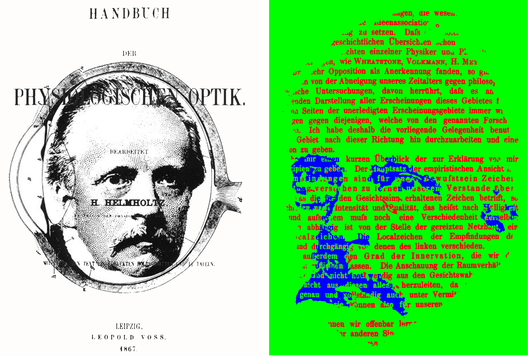Hermann Ludwig Ferdinand von Helmholtz1821–1894
Helmholtz established the law of conservation of energy in both the physical and biological domains; he measured the speed of nerve transmission, and made numerous contributions to vision and audition. The range of his scientific researches was enormous, and he made these accessible to a wide public through his Popular Lectures on Scientific Subjects. He studied physiology under Johannes Müller, but he was to provide the evidence to replace vitalism with mechanism. Moreover, contrary to Müller’s assertions, Helmholtz demonstrated that nerve conduction is not instantaneous. The initial experiments were carried out with a neuromuscular preparation from frog, but similar results were obtained from reaction time experiments with humans. By stimulating the skin on the toe or thigh and requiring subjects to respond as quickly as possible, estimates of conduction velocity could be derived by subtraction; the values were between 50-100 ms. Helmholtz was born in Potsdam and displayed a keen interest in physics as a boy; economic necessity led him to study medicine (with an army scholarship) at Berlin. On release from the army, he took up an academic career, being called to the chair of physiology at Königsberg in 1849, and thereafter to Bonn, Heidelberg, and Berlin. While at Königsberg he invented the ophthalmoscope and measured the speed of nerve transmission. The second and third volumes of his monumental Handbook of Physiological Optics were published during his tenure in Heidelberg; the three volumes appeared separately in 1856, 1860 and 1866, and then together in 1867. On the left, he is shown in his diagram of the eye from the Handbook, as well as its title page. The first volume concerned physical optics, the second the physiology of vision, and the third was on visual perception. His analysis of perception drew more heavily on British empiricism than on the Kantian philosophy prevalent in Germany. Helmholtz adopted Berkeley’s concept of unconscious inference to account for the way in which we learn to see and how common perceptions can arise from varied patterns of stimulation: “The sensations of the senses are tokens for our consciousness, it being left to our intelligence to learn how to comprehend their meaning”. The German text with these words is shown on the right, with the text also defining his features. His theoretical position was supported by many experiments, particularly with the stereoscope: “The invention of the stereoscope by Wheatstone made the difficulties and imperfections of the Innate Theory of sight much more obvious than before, and led to another solution which approached much nearer the older view, and which we call the Empirical Theory of Vision”. Colour vision was treated in the second volume: Helmholtz extended Young’s hypothesis that colour could be perceived through the action of three mechanisms, and he presented three speculative curves showing the respective wavelength sensitivities of nerves with these specific energies.
